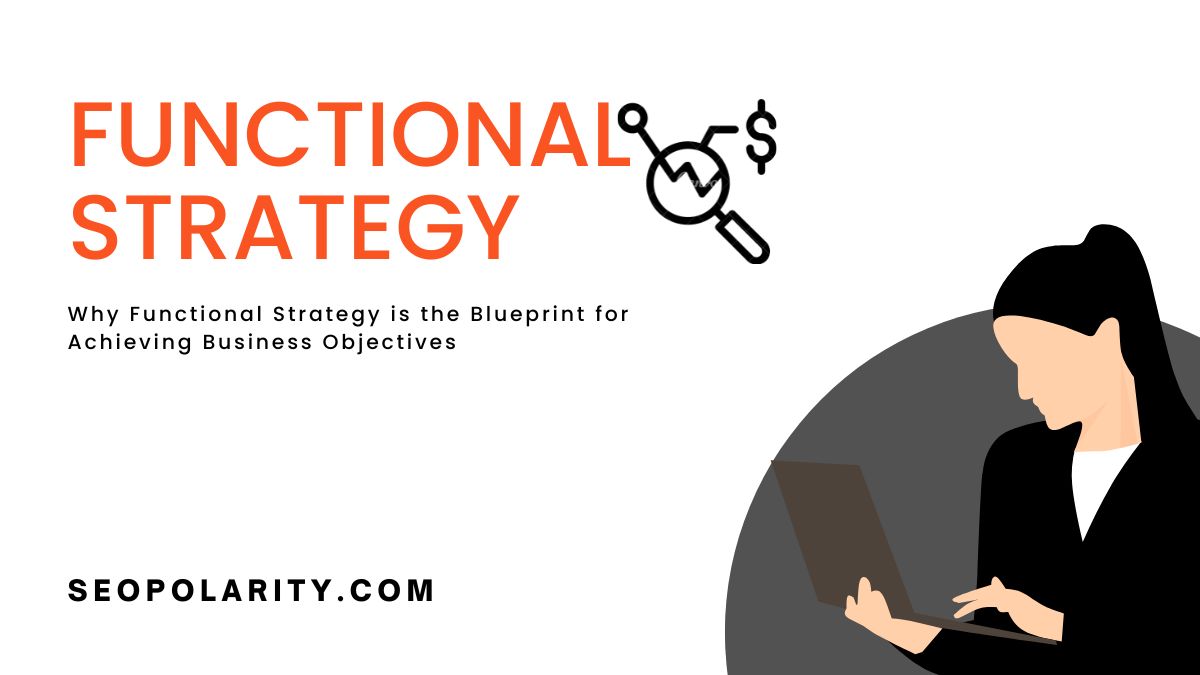
In the intricate shade of ultramodern business, achieving organizational objectives requires further than bare ambition; it demands a strictly drafted plan that steers every aspect of the association towards its common pretensions. Enter functional strategy – the strategic design that translates high-position business objects in a practicable way across colorful functional areas. In this comprehensive blog post, we will claw into why functional strategy isn’t just an option but a necessity for achieving business objectives, and how it forms the foundation of sustainable growth and lasting success.
1. Alignment and Coherence: Guiding Unified Efforts
One of the foremost reasons why functional strategy matters is its capability to produce alignment and consonance within an association. As business objects set the course, functional strategies serve as the nautical compass that directs each department’s conduct and enterprise toward those participating pretensions. This alignment fosters a harmonious community, barring departmental silos and promoting cross-functional collaboration. When everyone is on the same runner, working towards a common purpose, organizational effectiveness and effectiveness naturally follow.
2. Resource Optimization: Maximizing Impact
In a resource-constrained world, effective resource allocation is a pivotal motorist of success. Functional strategies serve as the torchbearers for resource optimization. By channelizing fiscal, mortal, and technological coffers to areas that promise the loftiest return on investment, these strategies ensure that every resource is put to its stylish use. This targeted allocation not only enhances effectiveness but also minimizes destruction, enabling associations to achieve further with the coffers at hand.
3. Translating Vision into Action: From Aspirations to Accomplishments
Business objects serve as the North Star, guiding the association’s line. still, turning these high-position bournes into palpable issues requires a clear plan of action. This is where functional strategies play a vital part. By breaking down overarching objects into specific tasks, liabilities, and timelines, functional strategies empower brigades to bridge the gap between vision and prosecution. They convert abstract bournes into measurable achievements, one step at a time.
4. Mitigating Risks and Ensuring Adaptability: Navigating Uncertainty
In the dynamic realm of business, the query is the only constant. Functional strategies aren’t just about seizing openings; they are also about addressing challenges and mollifying pitfalls. These strategies include threat assessment and contingency plans, allowing associations to proactively prepare for implicit dislocations. By anticipating pitfalls and planning for contingencies, functional strategies equip businesses to navigate storms and stay the course toward their objectives.
5. Data-Driven Decision-Making: Precision in Action
In an age of data cornucopia, informed decision-timber is consummated. Functional strategies aren’t created in insulation; they’re predicated on data and perceptivity. request trends, client geste, and assiduity marks are strictly anatomized to inform the strategic direction. This data-driven approach ensures that strategies remain adaptable and responsive to real-time changes, thereby adding the liability of successful issues.
6. Accountability and Ownership: Fostering a Culture of Responsibility
Clear responsibility is the foundation of success. Functional strategies assign specific liabilities to individualities or brigades within each functional area. This not only fosters a sense of power but also creates a culture of responsibility. When each person understands their part in achieving objectives, a participated commitment to success is cultivated, leading to a more engaged and empowered pool.
7. Enhancing Cross-Functional Collaboration: Synergy in Action
Business objects frequently demand collaboration across different departments. Functional strategies are islands that grease this collaboration. By furnishing a participated frame and purpose, these strategies encourage departments to unite seamlessly. When colorful functions work together, using their unique strengths, the association achieves a community that accelerates progress toward objects.
8. Sustainable Growth and Long-Term Vision: Beyond Immediate Wins
Functional strategies go beyond short-term earnings; they prioritize sustainable growth aligned with the association’s long-term vision. By icing that growth enterprise cleave to the association’s values, charge, and vision, these strategies lay the foundation for responsible expansion. This approach fosters a culture of lasting success and enduring impact.
Conclusion: Functional Strategy as the Guiding Light
In the intricate shade of business operation, functional strategy is the guiding light that steers associations toward their objects. Through alignment, resource optimization, practicable plans, threat mitigation, data-driven opinions, responsibility,cross-functional collaboration, and sustainable growth, functional strategies give the comprehensive design for success. By embracing and enforcing functional strategies as the nautical compass, associations set themselves on a course of sustainable growth, invention, and lasting success in a fleetly changing business geography. As businesses align their conduct with their bournes through functional strategies, they draft a roadmap that propels them to reach new heights and produce a lasting heritage in the world of business.




